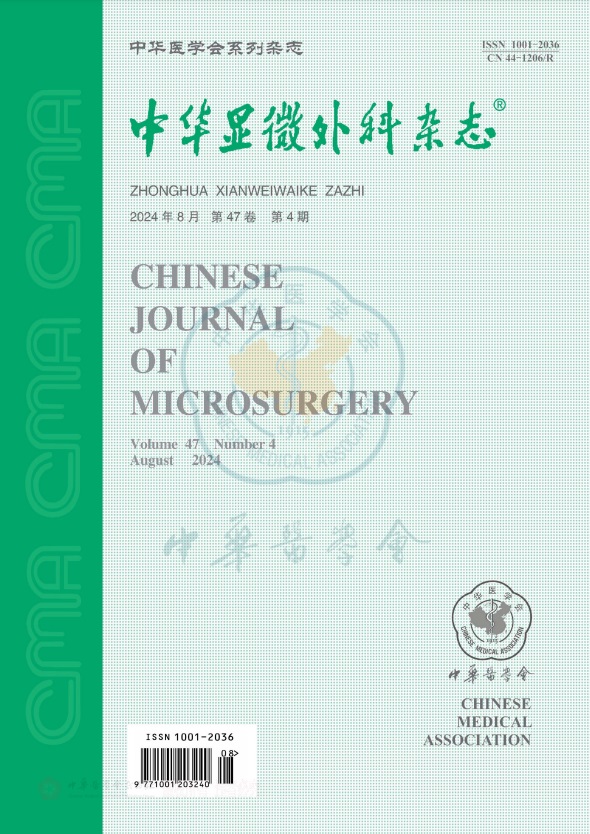Clinical safety of collagen nerve scaffold with longitudinally oriented microchannels in bridging peripheral nerve defect
引用次数: 0
Abstract
Objective To evaluate the clinical safety of the collagen nerve scaffold with longitudinally oriented microchannels in bridging peripheral nerve defect. Methods Five patients with 8 peripheral nerve defects of 18 to 30 (mean, 23.8) mm in length were involved in the pilot study and treated from July, 2017 to March, 2018, including 6 digital nerves and 2 medial antebrachial cutaneous nerves. The defects were repaired with the collagen nerve scaffold with longitudinally oriented microchannels independently developed. Routine therapy of prophylactic systemic antibiotics but no immunosuppressive drugs was given to all patients post-operatively. All patients were followed-up by regular review in the outpatient department combined with WeChat and telephone. The clinical safety of the nerve scaffold was preliminarily evaluated through observing the condition of the healing of the local wound and the whole body. The blood routine examineation and biochemical test were detected. The statistical analysis of the measurement data was performed by the analysis of variance of repeated measurement data, and the difference was statistically significant when P<0.05. Results All patients were followed-up for 7 to 15 months (average, 10 months). No adverse events such as infection, allergy, damage of liver and kidney function occurred. The operative incisions healed primarily, with no redness, exudation and rupture in the local area. There was no systemic symptoms such as fever, nausea, vomiting, skin itching, etc. The results of blood routine tests and biochemical tests were normal. The data of tests was compared, and the difference was not statistically significant (P>0.05). Conclusion The preliminary study shows that it is clinically safe to bridge peripheral nerve defects with the collagen nerve scaffold with longitudinally oriented microchannels. Key words: Collagen nerve scaffold with longitudinally oriented microchannels; Peripheral nerve; Nerve defect; Safety纵向微通道胶原神经支架桥接周围神经缺损的临床安全性
目的评价纵向微通道胶原神经支架桥接周围神经缺损的临床安全性。方法5例患者于2017年7月至2018年3月接受了初步研究,共8条外周神经缺损,长度为18至30(平均23.8)mm,包括6条指神经和2条前臂内侧皮神经。用具有自主开发的纵向微通道的胶原神经支架修复缺损。所有患者术后均给予常规预防性全身抗生素治疗,但不给予免疫抑制药物。所有患者均在门诊部通过微信和电话进行定期复查。通过观察神经支架局部和全身的愈合情况,初步评价了神经支架的临床安全性。检测血常规及生化指标。通过重复测量数据的方差分析对测量数据进行统计分析,差异有统计学意义(P0.05)。结论初步研究表明,采用纵向微通道胶原神经支架桥接周围神经缺损在临床上是安全的。关键词:具有纵向微通道的胶原神经支架;周围神经;神经缺损;安全
本文章由计算机程序翻译,如有差异,请以英文原文为准。
求助全文
约1分钟内获得全文
求助全文
来源期刊
CiteScore
0.50
自引率
0.00%
发文量
6448
期刊介绍:
Chinese Journal of Microsurgery was established in 1978, the predecessor of which is Microsurgery. Chinese Journal of Microsurgery is now indexed by WPRIM, CNKI, Wanfang Data, CSCD, etc. The impact factor of the journal is 1.731 in 2017, ranking the third among all journal of comprehensive surgery.
The journal covers clinical and basic studies in field of microsurgery. Articles with clinical interest and implications will be given preference.

 求助内容:
求助内容: 应助结果提醒方式:
应助结果提醒方式:


